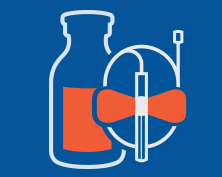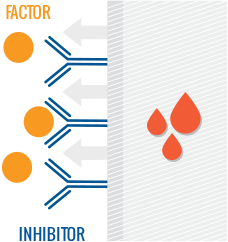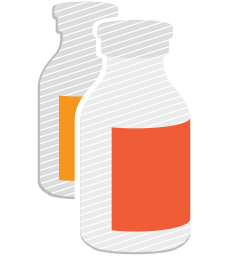Changing the Conversation

Managing life with a bleeding disorder can be an overwhelming experience for anyone. The added diagnosis of an inhibitor can be a devastating setback. Inhibitors can develop in anyone with hemophilia at any age,1 but a new study comparing product classes is advancing our understanding of inhibitor development in previously untreated patients with hemophilia A. Patients and caregivers can educate themselves about inhibitors with the information that follows.
LEAD INVESTIGATOR SPEAKS OUT ON LANDMARK RESULTS
TREATING HEMOPHILIA WITH CLOTTING FACTORS
Hemophilia is a bleeding disorder that prevents blood from clotting properly.2 People born with hemophilia are missing some or all of a protein called "clotting factor." Depending on which clotting factor is missing, a person may have hemophilia A or hemophilia B.3


Hemophilia A4
~1 in 5000 males born in the US
Missing some or all
of the clotting factor viii


Hemophilia B4
~1 in 20,000-25,000 males born in the US
Missing some or all
of the clotting factor ix
Factor replacement therapy is a treatment for hemophilia in which the missing clotting factor is replaced in the blood. The clotting factor (or simply, "factor") is administered via infusion (through a vein).5

THE RISK OF DEVELOPING AN INHIBITOR6
Inhibitors are a serious complication of hemophilia treatment in which the body's immune system develops antibodies (inhibitors) to the infused factor used to treat bleeding episodes. Inhibitors greatly reduce—or inhibit—the ability of the factor to stop bleeding, making it very hard to control or prevent bleeding episodes.
Inhibitors are the main treatment challenge today.6

THE RISK OF DEVELOPING AN INHIBITOR6
Inhibitors are a serious complication of hemophilia treatment in which the body's immune system develops antibodies (inhibitors) to the infused factor used to treat bleeding episodes. Inhibitors greatly reduce—or inhibit—the ability of the factor to stop bleeding, making it very hard to control or prevent bleeding episodes.

Inhibitors are the main treatment challenge today.6
ADVANCING OUR KNOWLEDGE:
PLASMA-DERIVED VS RECOMBINANT FACTOR VIII7
For nearly 30 years, recombinant and plasma-derived factor replacement products have been used to treat and prevent bleeding, but no one had a full understanding of how they affect patients' risk of inhibitor development. Until recently, the influence of factor VIII (FVIII) concentrate on the formation of inhibitors was considered to be the same between different product classes. The latest clinical data suggest that product type may play a role in the risk of developing inhibitors.8
MORE RESOURCES
VIDEO STORIES
Learn more about inhibitors and new study results from leading hematologists.
SIPPET STUDY
Find more information about the SIPPET results.
ADVOCACY RESOURCES
Find more support with hemophilia advocacy organizations.
MORE RESOURCES
VIDEO STORIES
Learn more about inhibitors and new study results from leading hematologists.
SIPPET STUDY
Learn more information about the SIPPET results.
ADVOCACY RESOURCES
Find more support with hemophilia advocacy organizations.
TREATMENT OF INHIBITORS
Current management includes bypassing agents to treat and prevent bleeding and immune tolerance induction (ITI) to attempt inhibitor eradication.
It is important to note that treatment varies by patient. Be sure to consult a healthcare professional before making any treatment decisions and continue to remain informed to help facilitate care.
References:
- Medical and Scientific Advisory Council. MASAC Recommendations on Standardized Testing and Surveillance for Inhibitors in Patients with Hemophilia A and B. New York, NY: National Hemophilia Foundation; August 15, 2015. MASAC Document #236.
- Hemophilia Federation of America. What is a bleeding disorder? Hemophilia Federation of America website. http://www.hemophiliafed.org/bleeding-disorders/what-is-a-bleeding-disorder/. Accessed May 10, 2016.
- Hemophilia Federation of America. What is hemophilia? Hemophilia Federation of America website. http://hemophiliafed.org/bleeding-disorders/hemophilia/. Accessed May 9, 2016.
- Homecare for the Cure. Types of hemophilia and other bleeding disorders. Hemophilia Information website. http://www.hemophilia-information.com/types-of-hemophilia.html. Accessed May 10, 2016.
- Homecare for the Cure. Treatment of hemophilia. Hemophilia Information website. http://www.hemophilia-information.com/treatment-of-hemophilia.html. Accessed May 10, 2016.
- World Federation of Hemophilia. What are inhibitors? http://www1.wfh.org/publication/files/pdf-1343.pdf. Published 2009. Accessed May 10, 2016.
- National Hemophilia Foundation. History of bleeding disorders. https://www.hemophilia.org/Bleeding-Disorders/History-of-Bleeding-Disorders. Accessed May 10, 2016.
- Peyvandi F, Mannucci PM, Garagiola I, et al. A randomized trial of factor VIII and neutralizing antibodies in hemophilia A. N Engl J Med. 2016;374(21):2054-2064.




